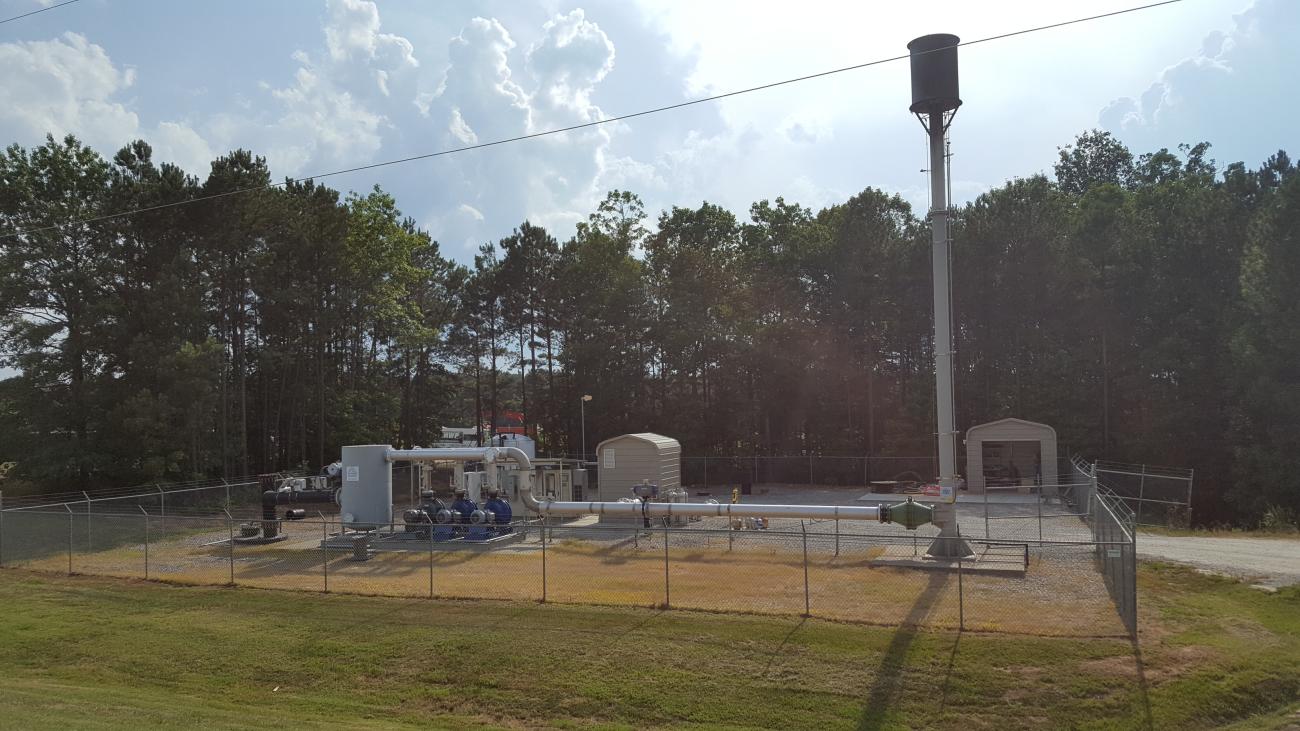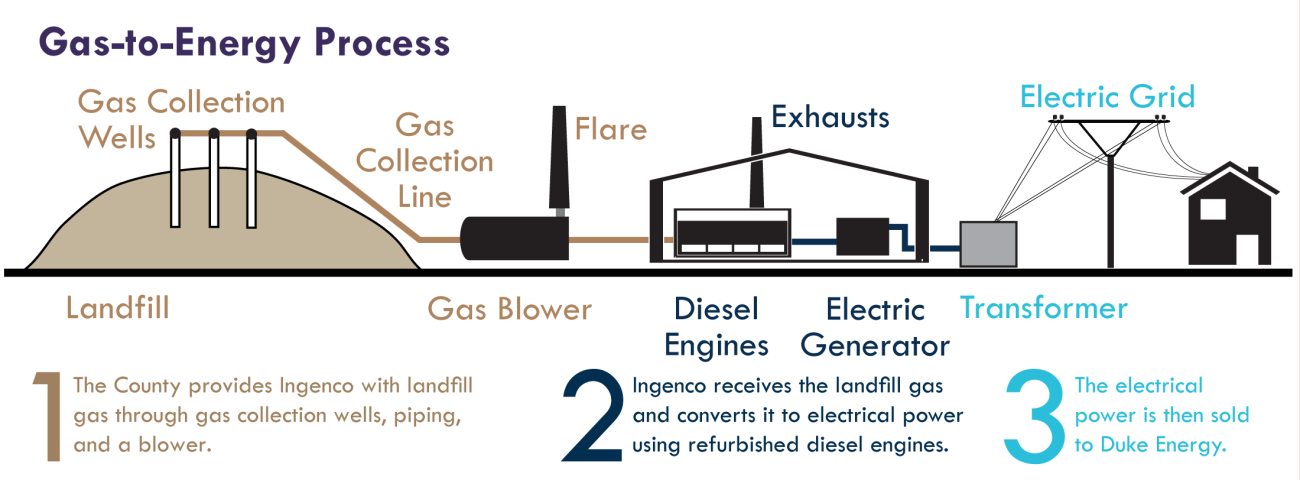What is landfill gas?

Landfill gas (LFG) is created as the organic waste in the landfill decomposes. Landfill gas is made up of approximately 50-60% methane, approximately 30-40% carbon dioxide, and up to 10% of other gases including oxygen. These other gases actually cause the odor, which smells a lot like – you guessed it – garbage! The methane that is found in the landfill gas can be used to produce energy for beneficial uses, such as to power industrial processes or to produce alternative “renewable” energy.
How is landfill gas collected?

- A series of vertical gas collection wells are installed in the landfill extending down into the waste.
- LFG is pulled from the waste under pressure.
- LFG collected by the wells is routed through a series of pipes to the County’s blower/flare station.
- The LFG is then flared primarily for the purpose of destroying the harmful methane gas (significantly more harmful to the environment than carbon dioxide, which is essentially what the flare produces).
As you will note on the Landfill Timeline, Wake County contracted with Ingenco, starting in 2013, to produce electrical power from the methane that is not flared. Until January of 2024, approximately 5-8 megawatts of power were being produced 24/7 and sent back to the electrical grid for use by the community surrounding the landfill. Unfortunately, in January 2024, the electrical plant suffered a fire and lost the use of the electrical power production. Fortunately, the County has been able to work with Archaea, the company that now owns Ingenco, to convert the site from a power production facility to a renewable natural gas (RNG) facility during 2024 and 2025.
What is a renewable natural gas (RNG) facility?
RNG is an alternative landfill gas-to-energy concept that has gained popularity over the past 5-8 years across the nation and world. Differing from electrical power production, in lieu of burning the gas in engines to create electrical power, this process simply removes the impurities (carbon dioxide, oxygen and other non-methane components) in order to make the LFG almost 100% methane and then injects the gas into a nearby gas line (in an easement on the SWLF property) for use/reuse. Being that the RNG is not created from fossil fuels, it is considered a renewable source, as it comes from decomposing municipal solid waste.
Former Landfill Gas-to-Energy Facility Information
Energy Production
- The Landfill Gas-to-Energy facility is currently producing ±8.5 Megawatts of continuous power.
- 8.5 Megawatts of electricity can power a minimum of 8,500 homes during peak demand and about 17,000 homes off peak.
- The landfill gas-to-energy facility is designed to increase capacity as the landfill grows and generates more landfill gas.
- Based on landfill gas projections the gas-to-energy facility could one day provide sufficient power for a town the size of Holly Springs.
Benefits
- Prevents greenhouse gases produced by landfills from entering the atmosphere.
- Provides a local, renewable fuel source to generate electrical power.
- Reduces our dependence on nuclear and fossil fuels to produce power.
- Generates revenue for the County through the sale of electricity.
- Creates jobs, and encourages economic development.

